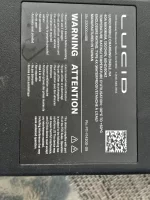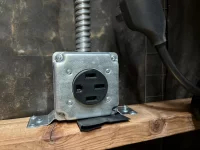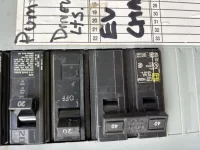You should find a new electrician. There are a number of misunderstandings here:
1) The continuous current that the Lucid charger can pull, at maximum, is 40 amps - on that you're correct, and that is what it says.
2) However, in order for it to pass electrical/fire code requirements, any continuous loads (like an EV charger) must be, at maximum, 80% of the breaker and wire. That is, a 40A continuous load must be on a 50A breaker and wire, as 40A is 80% of 50A. If you wanted to run it at 48A, you would need to hardwire an EVSE, and put it on a 60A breaker on 60A gauge wire, as 48A is 80% of 60A.
3) In order to run 50A wire, you need to use #6 AWG wire.
4) The "50" in 14-50 literally means 50A breaker and wire.
5) You should ensure your outlet is a commercial outlet, not a $15 Leviton or cheap Home Depot/Lowes outlet. EVs melt them. The $15 Leviton residential grade outlets sold at Home Depot are not sufficient to support daily vehicle charging. The Leviton outlet has fiberglass insulators that tend to melt out after a few months of vehicle charging. The outlets are not designed specifically for EV charging; they are designed for plugging in RVs and range ovens. Ranges will pull max power once in a while when we roast a turkey, but EV charging will be pulling maximum amperage for hours on end every night. For this heavy use, you want an industrial grade NEMA 14-50 outlet, by one of these three brands: Hubbell, Bryant, or Cooper. These use glass or ceramic insulators and should last 3-5 years before they, too, eventually need to be replaced. At $50 – $100, they are not cheap.
You should find a new electrician, ASAP, and make sure they're licensed.



